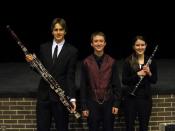Mentoring, at-risk youth, and recreation are three terms that are often used collectively. But what do they really mean? There are many different interpretations of each term and definitions vary. For the purpose of this paper, mentorship refers to a developmental relationship between a more experienced mentor and a less experienced partner referred to as a protégé. The protégé is usually guided and protected by the more prominent Mentor (Mentor, 2007). The roots of this practice can be found in ancient history. The word itself comes from the character of Mentor in Homer's Odyssey. Despite the fact that the actual mentor in the story was innefective as a mentor, the goddess Athena took on his facade in order to guide young Telemachus through his troubles (Roberts, 1999). The term 'at-risk youth' is more subjective. The social surroundings, in which numerous youth live today, have significantly increased the probability that they will become delinquent or experience other harmful outcomes.
As a result, many public concerns are imitated by considerable increases in substance abuse, suicide, teen pregnancy, absenteeism, destruction, and dropping out. Furthermore, youth often have inherent and physical conditions over and above developmental challenges that impact their psychological and social growth (Burt, Resnick & Novick, 1998). Wikipedia (2007) uses recreation and fun interchangeably and defines it as "the use of time in a manner designed for therapeutic refreshment of one's body or mind." Simply put, recreation refers to particular activities carried out during free time. These activities can be for the purpose of exercise, educating, skill-building, socialization, or solely pleasure (Brown, 2005). Although recreation can be a significant economic generator and cost saver when it comes to health care, police service and justice costs, it can also boast non-financial benefits as well (California State Parks [CSP], 2005). Is there one best...


